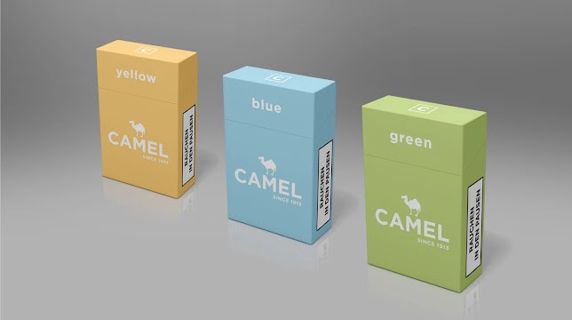
Many people don’t think much about the surface of a cigarette box. Yet, its finish plays a big part in looks, feel, and safety. Different surface finishes give unique styles and benefits. Let’s explore how these finishes compare so you can understand them better.
Gloss Coating and Its Vibrant Appeal
Gloss coating gives surfaces a shiny look. It makes colors look richer and sharper. Many brands use it because it catches the eye. It works well if you want your box to stand out on shelves.
One of its main strengths is protection. A gloss finish stops scratches and moisture from harming the box. It also prevents ink from fading in sunlight. This keeps designs looking fresh for longer.
While gloss looks lovely, it can show fingerprints. Marks can appear if people touch the box a lot. Yet, some advanced coatings fight this problem well. Still, people often accept this minor flaw for the shine and color it offers.
Gloss feels smooth. When you run fingers over it, it’s slick and sometimes even slippery. That’s why it feels modern and stylish. Many luxuries brands love gloss for this reason.
Another thing to note is cost. Gloss finishes are affordable, making them common in mass production. Printers often recommend it for large batches.
Matte Finishes for a Subtle Sophistication
Matte finishes look smooth and soft, but without shine. They give a gentle, elegant feel. Brands that want a premium look often choose matte. It feels classy and modern.
Matte surfaces hide fingerprints and smudges well. Unlike gloss, they don’t show oily marks. This makes them perfect for handling. People who hold the box will notice how soft it feels.
One big plus of matte is its readability. Words and logos are easier to see because there’s no glare. Under bright lights, matte surfaces stay clear. Designers love this feature, especially for boxes with lots of text, making it a smart choice for custom cigarette boxes that often include branding and regulatory information.
Matte finishes also resist scratches fairly well. Though not as tough as gloss, they still protect designs. Some advanced matte coatings add extra layers for more durability.
Yet, matte has some downsides. Colors look a bit muted compared to gloss. They might not “pop” as much. Still, this muted look can be stylish, depending on the brand.
Matte finishes cost a bit more than gloss in many cases. But the feel and elegant appearance make it worth the price for premium products.
Overall, matte is ideal if you want an elegant, glare-free surface that feels good in the hand. It offers quiet luxury without flashiness.
Soft-Touch Coating for Luxurious Texture
Soft-touch coatings feel like velvet. They give a smooth, rubbery feel that’s unique. Many high-end brands pick soft-touch to show luxury and care. The moment someone touches it, it feels special.
This finish also cuts down glare. Like matte, it keeps reflections low. Designs remain visible under different lighting. Yet, soft-touch is even smoother to the touch than matte.
A big benefit is how it engages senses. People love how soft it feels. This sensory experience makes the box memorable. That’s why luxury products often use soft-touch to stand out.
Soft-touch coatings also provide decent protection. They help stop scratches and scuffs. Yet, they’re a bit more delicate than gloss or matte. If roughly handled, the soft surface can peel or mark.
Costs are higher for soft-touch. It’s one of the more expensive finishes. This makes it less common for cheaper products. Still, brands willing to spend extra get a premium look and feel.
Soft-touch works well for dark, rich colors. It gives colors depth without shine. Yet, bright colors might look slightly duller under this finish. Designers plan colors carefully to avoid this issue.
Spot UV for Highlighting Key Details
Spot UV is a finish that combines matte with shiny parts. It means only certain parts of the box shine while the rest stays matte. Brands use it to highlight logos, names, or images.
This method is perfect for catching attention. When light hits the shiny parts, it creates contrast. It makes designs stand out without covering the entire surface in gloss.
Spot UV also adds texture. The raised glossy parts feel different than the matte areas. This tactile contrast can engage customers who run their fingers over the box.
Some brands use spot UV to suggest quality. A simple matte box with glossy highlights can look very high-end. It suggests careful design and premium branding.
However, spot UV costs more than standard finishes. The process needs special equipment and extra time. Brands should plan budgets carefully if choosing this method.
Spot UV also works best on bold designs. Fine lines or tiny text may not stand out as well. Designers often use thicker fonts and simple graphics for the best effect.
Embossing and Debossing for Dimensional Effects
Embossing and debossing create raised or pressed-in areas on the surface. Embossing raises parts of the design. Debossing pushes them inward. Both add a three-dimensional feel.
These effects give depth and texture. They make a box feel rich and unique. When someone runs fingers over the design, they feel the shapes. This adds to the experience of opening a pack.
Embossing works well for logos and names. It helps customers remember the brand. Debossing can be subtler but adds elegance. Both methods show attention to detail.
These processes can be combined with other finishes. For example, a logo might be embossed and covered in gloss. This mix creates a layered look. It makes the box even more striking.
Costs are higher for embossing and debossing. They require custom metal dies to press the designs into the material. Small runs may be expensive, but large batches help lower costs.
One challenge is design limits. Very small details may not emboss well. Simple, bold shapes work best. Designers must plan the artwork carefully to avoid problems during pressing.
Foil Stamping for Metallic Brilliance
Foil stamping uses heat and pressure to apply a metallic layer to certain areas. It’s perfect for adding sparkle and luxury to packaging. Gold, silver, and other colors are available.
One big plus of foil stamping is its shine. The metallic look grabs attention under light. It signals luxury and quality. Many brands use foil to highlight logos or names.
Foil also adds texture. It can feel slightly raised and smooth. This difference makes the box feel special in the hand. Customers often notice these small touches.
Foil works well on dark backgrounds. The contrast is strong and eye-catching. However, it can look subtle on lighter surfaces. Designers often test different color pairs before finalizing the look.
Costs are higher for foil stamping. Like embossing, it needs custom tools. For small batches, this can be expensive. Larger runs help reduce the price per box.
Another challenge is alignment. Foil must be placed precisely. If the press shifts even slightly, the design may look off-center. Skilled printers avoid these issues through careful setup.
Laminations for Protective Benefits
Lamination covers the box surface with a thin film. This film can be glossy, matte, or soft-touch. It adds a layer of protection and makes the box stronger.
Here are key benefits of lamination:
Durability: Lamination shields the box from water, dirt, and scratches. It keeps designs safe during shipping and handling.
Longevity: Colors last longer under laminated surfaces. UV rays can’t fade the artwork as quickly.
Variety: Laminations come in many types, including anti-scuff versions. Each has different looks and feels.
Though lamination protects well, it adds cost. Thin films cost less, but high-quality films cost more. Brands weigh the protection benefits against the budget.
Lamination changes how the box feels. Gloss lamination is slick and shiny. Matte lamination feels soft and subtle. Soft-touch lamination adds luxury. Each choice affects how customers perceive the product.
Varnishes as Flexible Finishing Choices
Varnishes are liquid coatings applied over printed designs. They dry quickly and protect the surface. Many brands use varnish because it’s versatile and cost-effective.
Varnishes come in gloss, matte, satin, and even textured styles. Gloss varnish makes colors bright and lively. Matte varnish gives a soft, elegant feel. Satin sits between the two, offering some shine but less glare.
A key benefit is fast drying. Printers can produce boxes quickly. Varnish also helps fight scratches and moisture. It’s not as thick as lamination, but still offers good protection.
Another plus is low cost. Varnish is cheaper than lamination or soft-touch coatings. This makes it perfect for brands working with tight budgets.
However, varnish offers less durability than lamination. Heavy handling might wear it away over time. Yet, for many products, it provides enough protection without high costs.
Varnishes can also create creative effects. Some printers mix varnish types on the same box. For instance, a matte surface with gloss highlights. This method can look similar to spot UV but at lower cost.
Conclusion
Each of these finishes adds something special to a cigarette box. From shine to softness, and from protection to luxury, surface finishes help boxes look great and last longer. Choosing the right one depends on budget, brand image, and how the box will be used. Understanding these options helps businesses make smart decisions that appeal to customers and keep products safe.
Anita Terryさんをフォローして最新の投稿をチェックしよう!
0 件のコメント
この投稿にコメントしよう!
この投稿にはまだコメントがありません。
ぜひあなたの声を聞かせてください。
